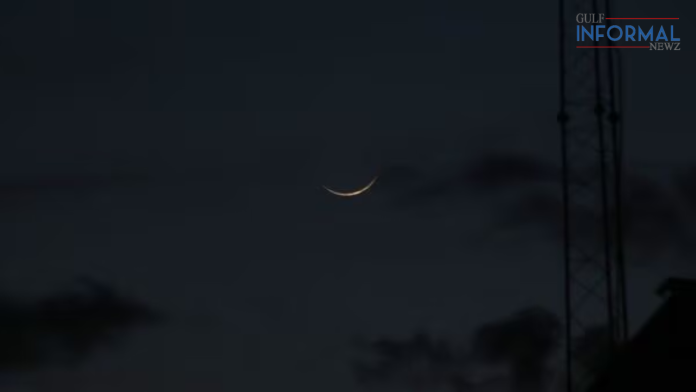On Monday, the crescent of the holy month of Ramadan was easily seen with the naked eye on the western horizon for more than an hour in the sky of the Arab world. It was observed by the Astronomical Society in Jeddah after sunset and moving towards the beginning of the night.
Engineer Majid Abu Zahra, president of the association, stated that he moved away from the glare of the setting sun and became higher in the sky compared to the previous night, a position called “crescent,” which means seeing the new crescent easily without the need for monitoring devices after its conjunction with the sun and its exit from the “new moon” status. And it is far enough away from it for light to appear on its surface.
Also Read: Saudi Arabia Railways announced capacity of Haramain high speed railway for Ramadan
Abu Zahira considered conjunction to be one of the phases of the moon, which means the sun meeting with it at the same height in the sky, and the moon moving from the west of the sun to its east, which is a global event that takes place in one moment for all parts of the earth.
He explained that it will be noticed during the coming few nights that the unlit side of the moon’s surface is illuminated by a faint light, which is sunlight reflected from the Earth. Day after day, the crescent’s illumination will increase and it will rise higher in the sky at sunset, and it will remain for a longer period after the beginning of the night. Because it is moving away from the sunset location.
It is noteworthy that this time of the lunar month is ideal for observing faint objects in the depths of space, such as galaxies, nebulae, and star clusters, given that the sky will be dark when the crescent moon sets early in the night.




